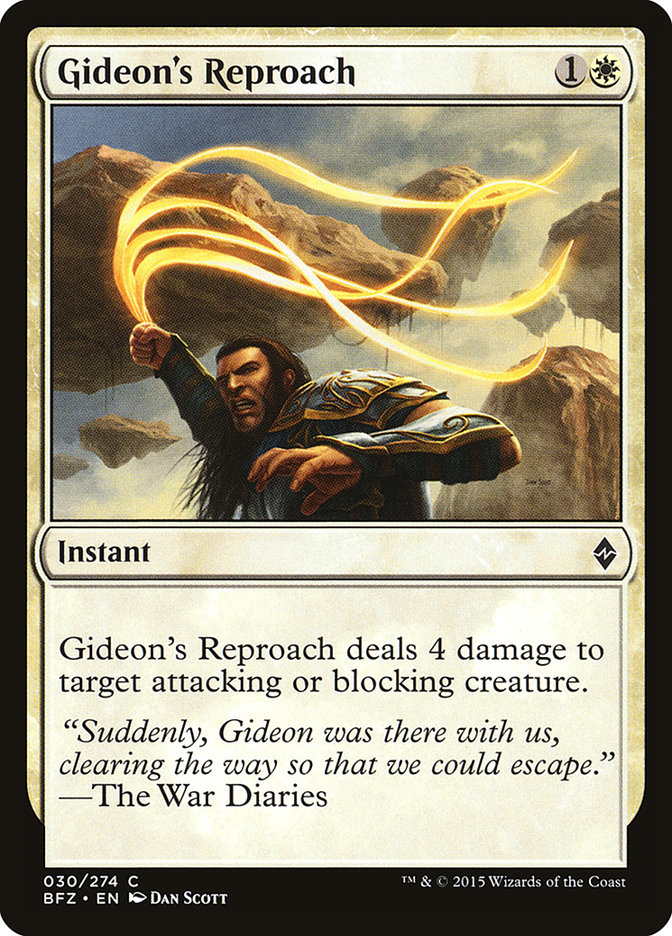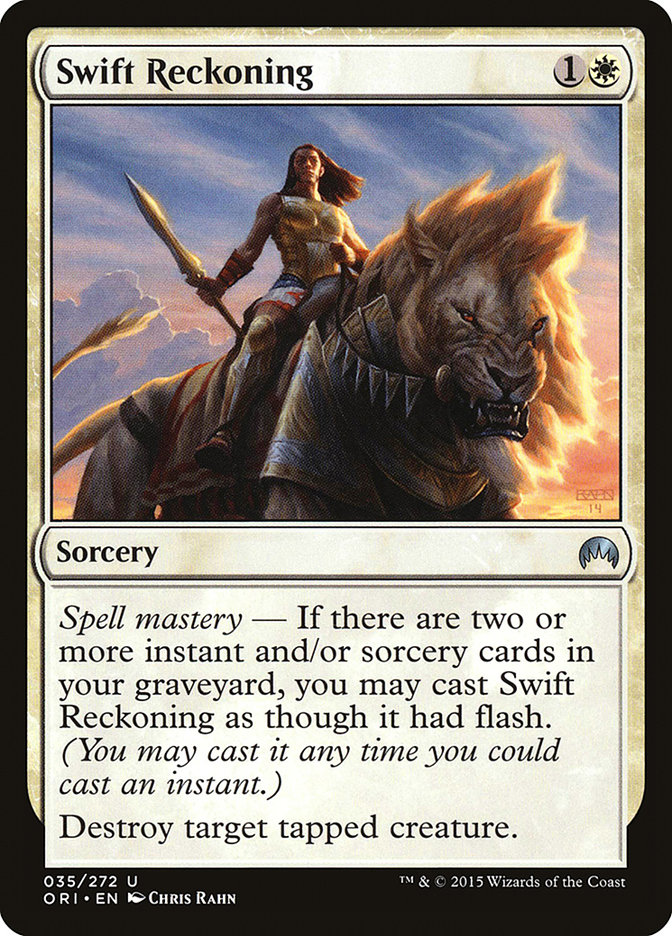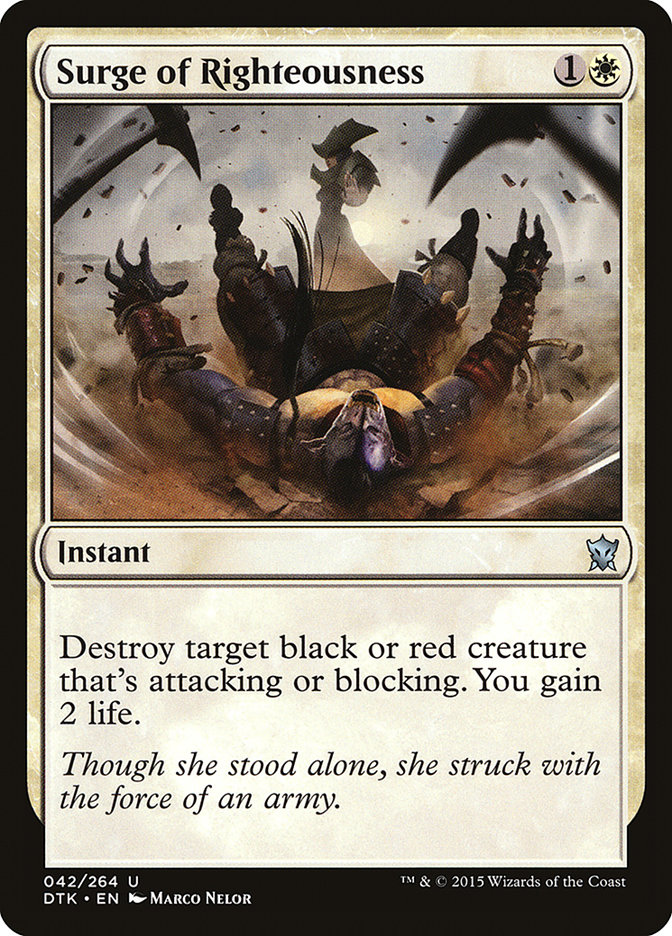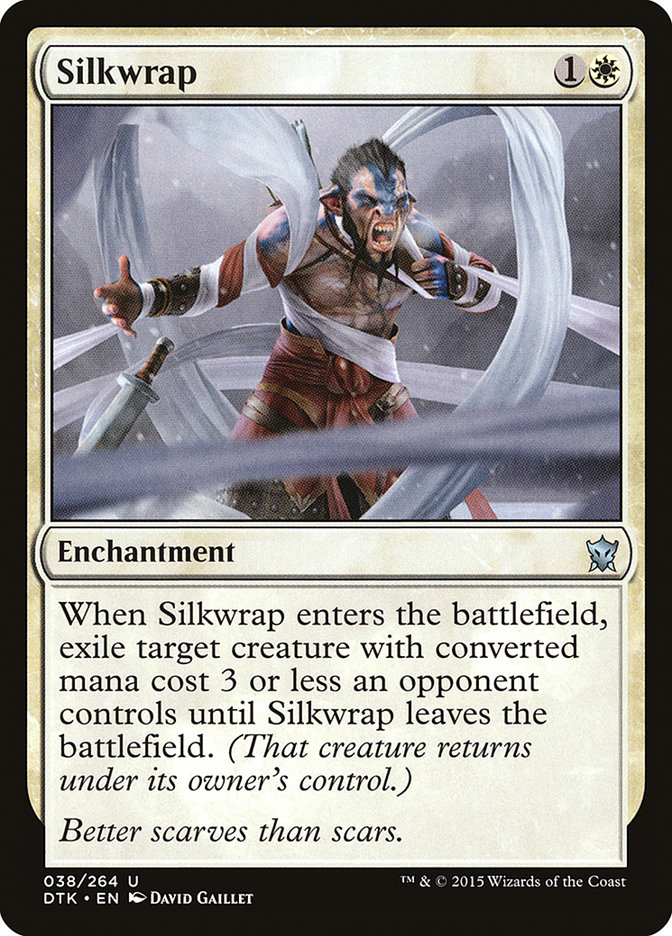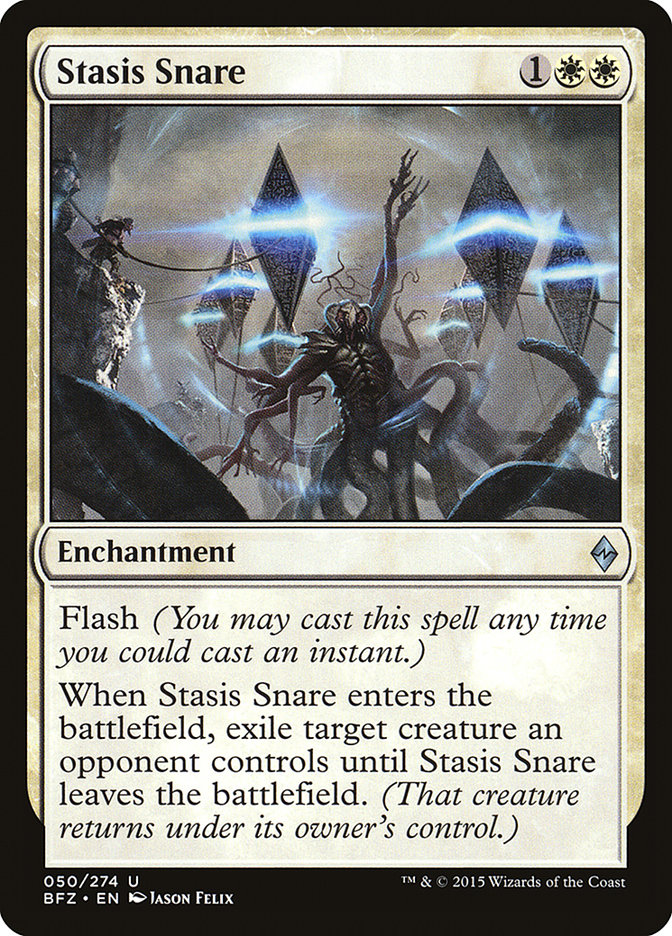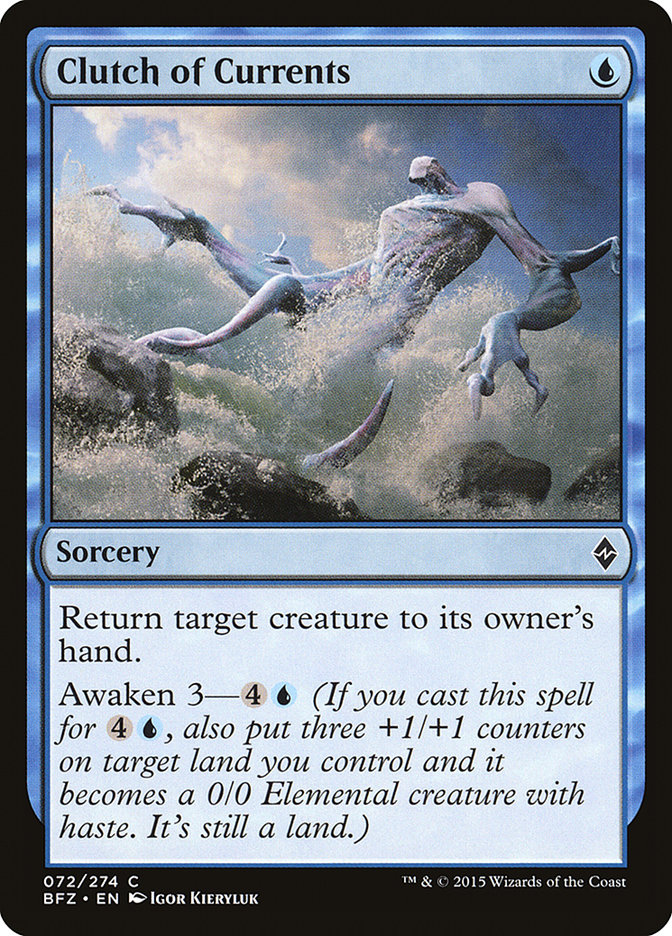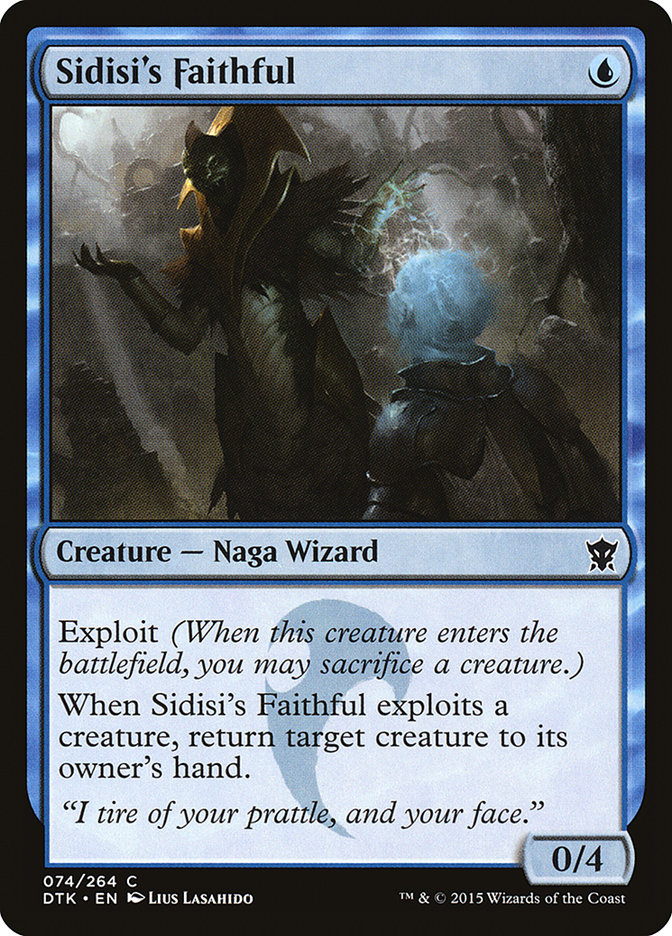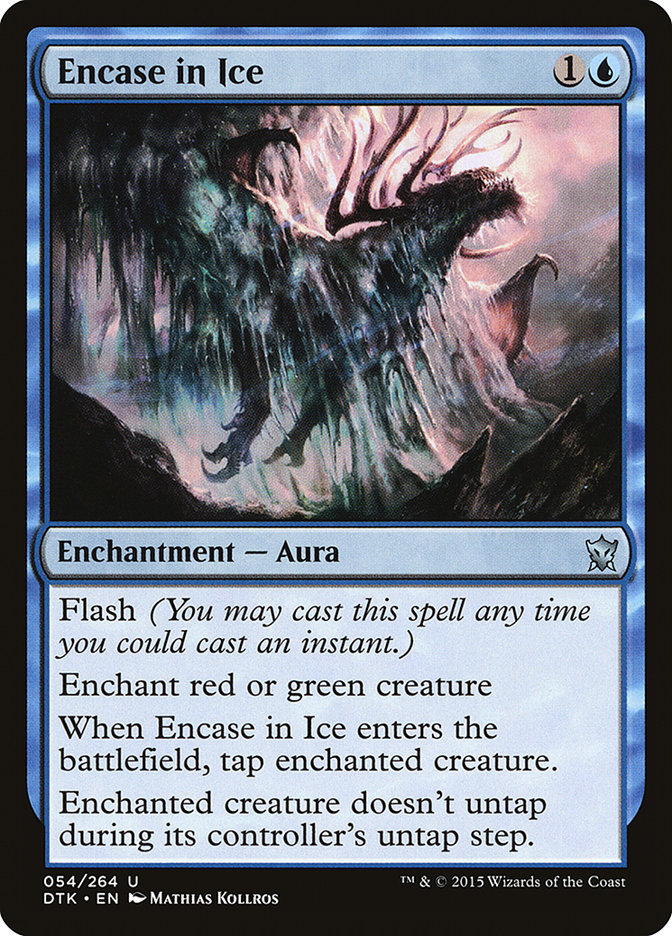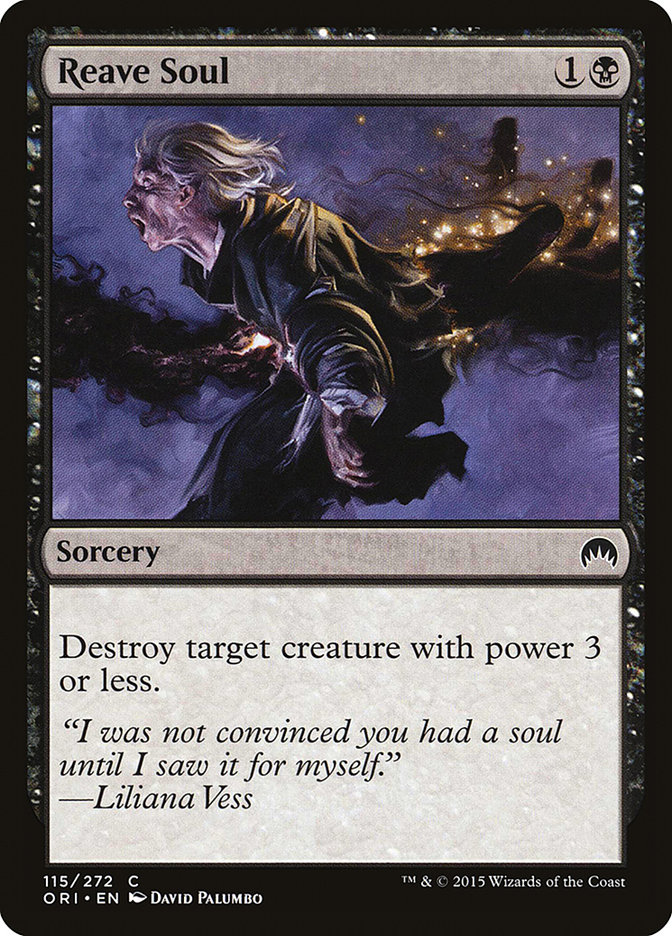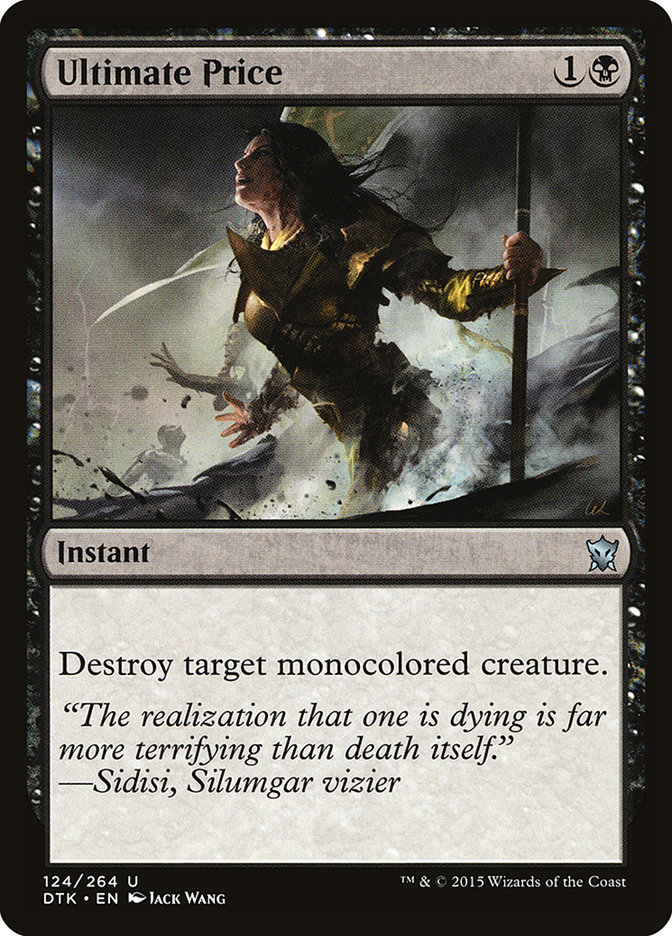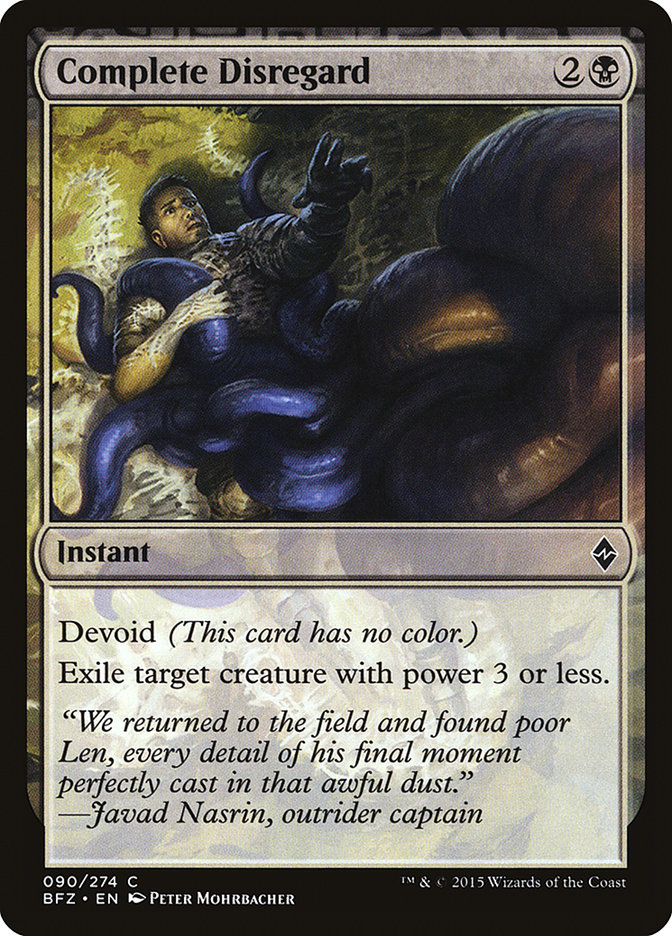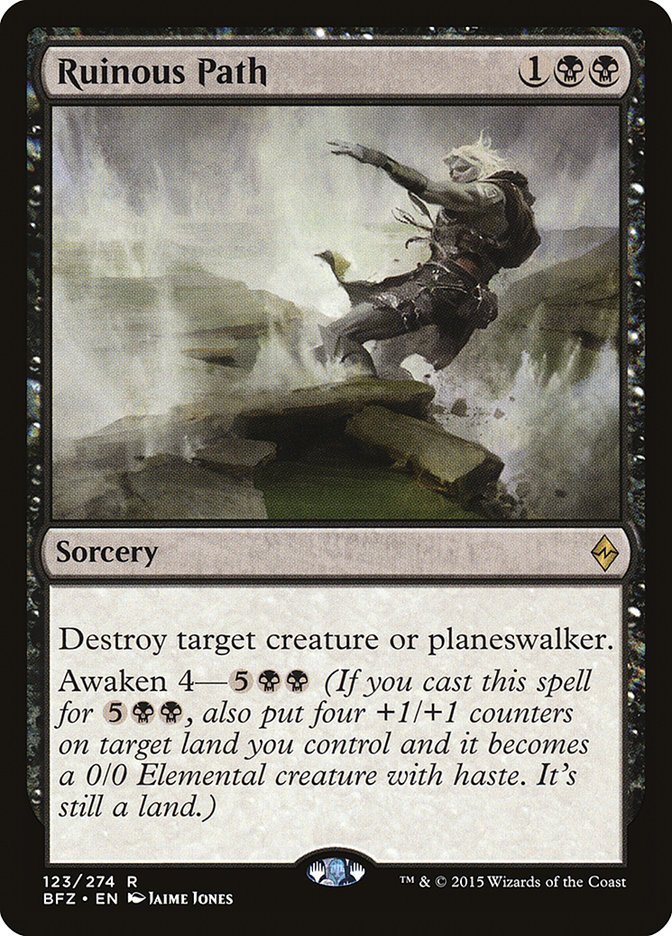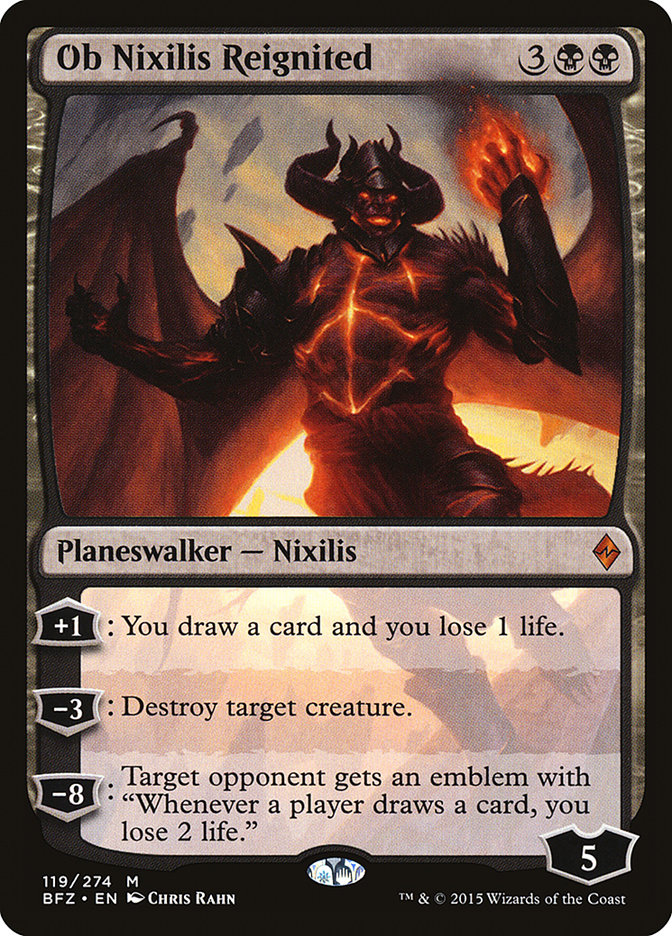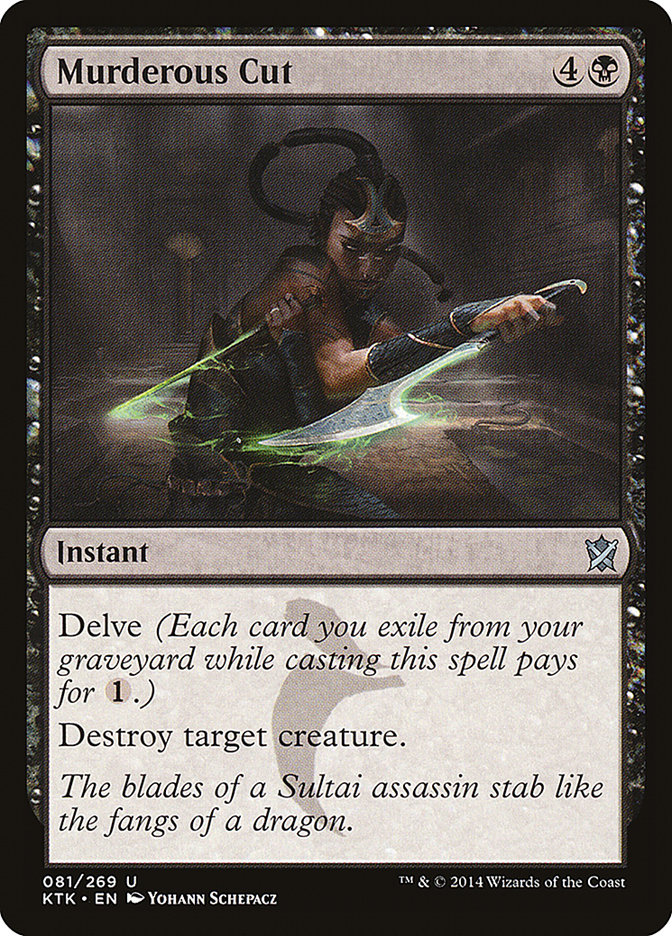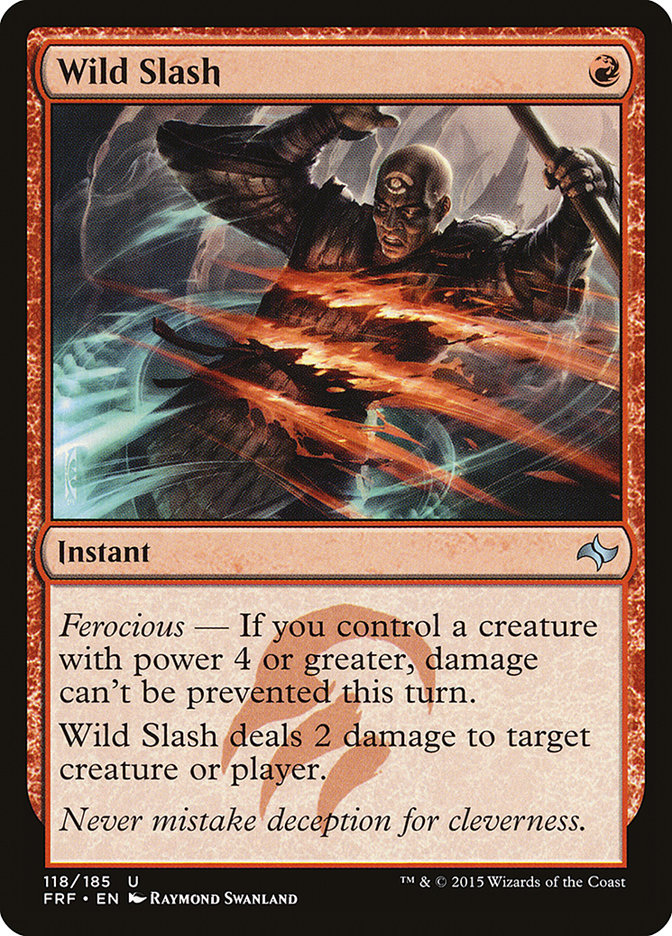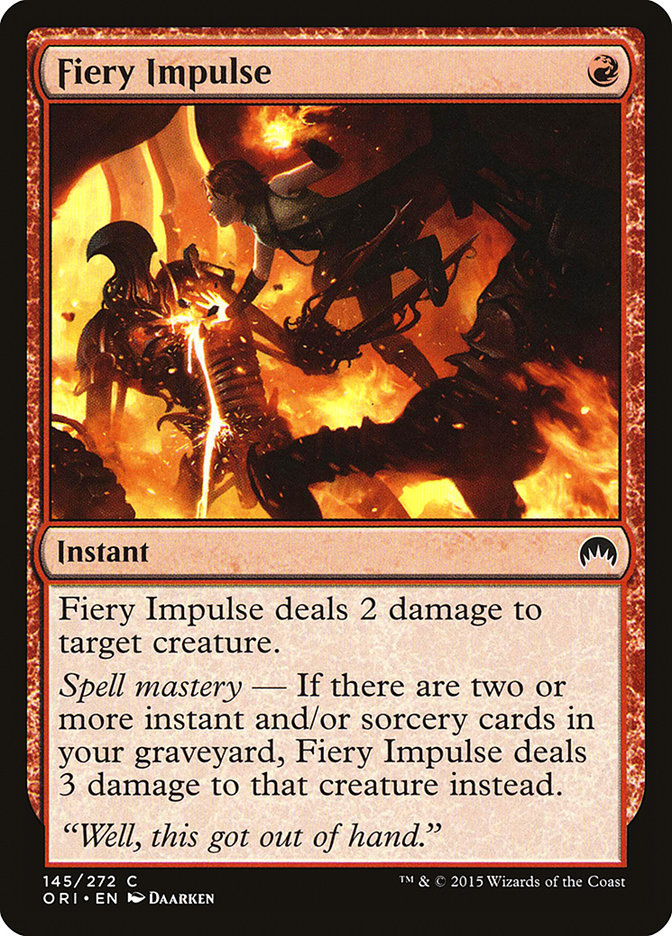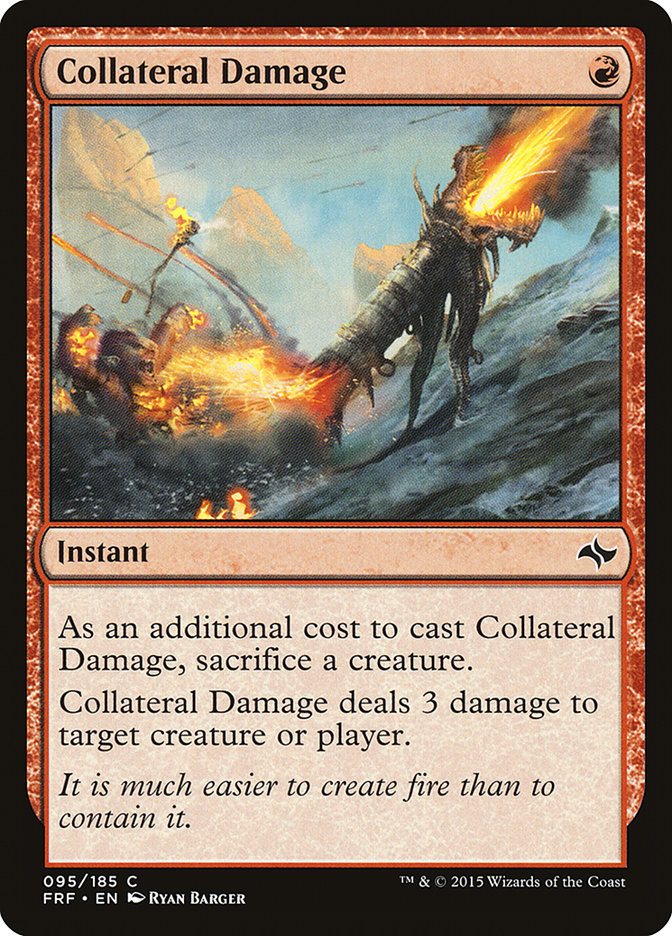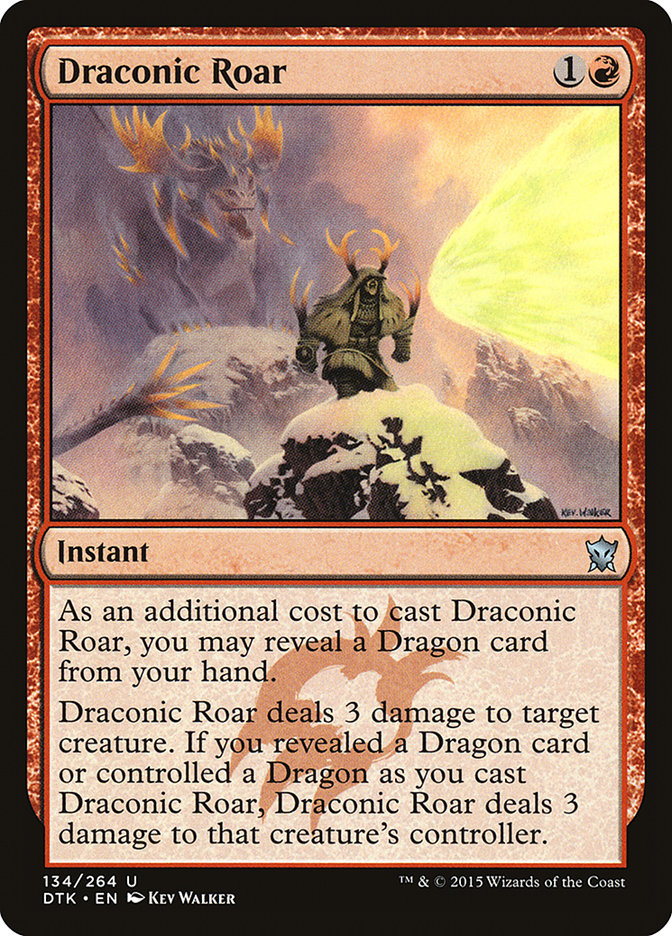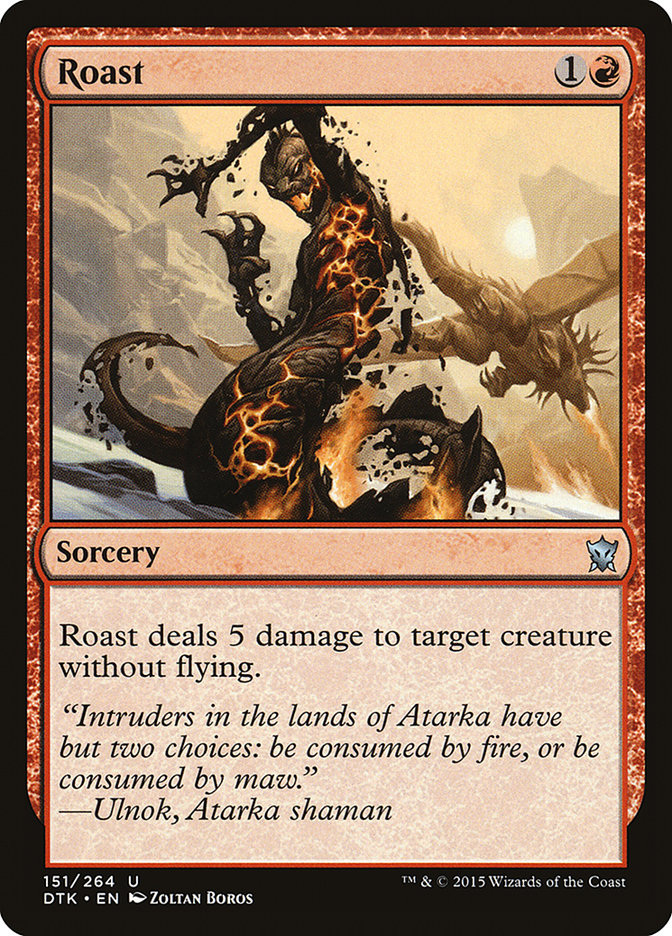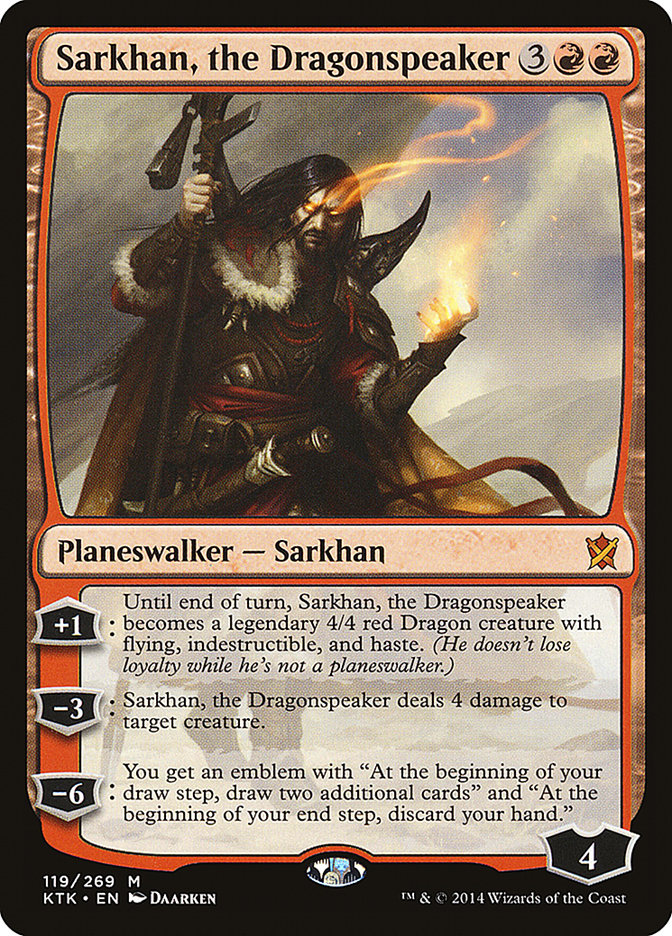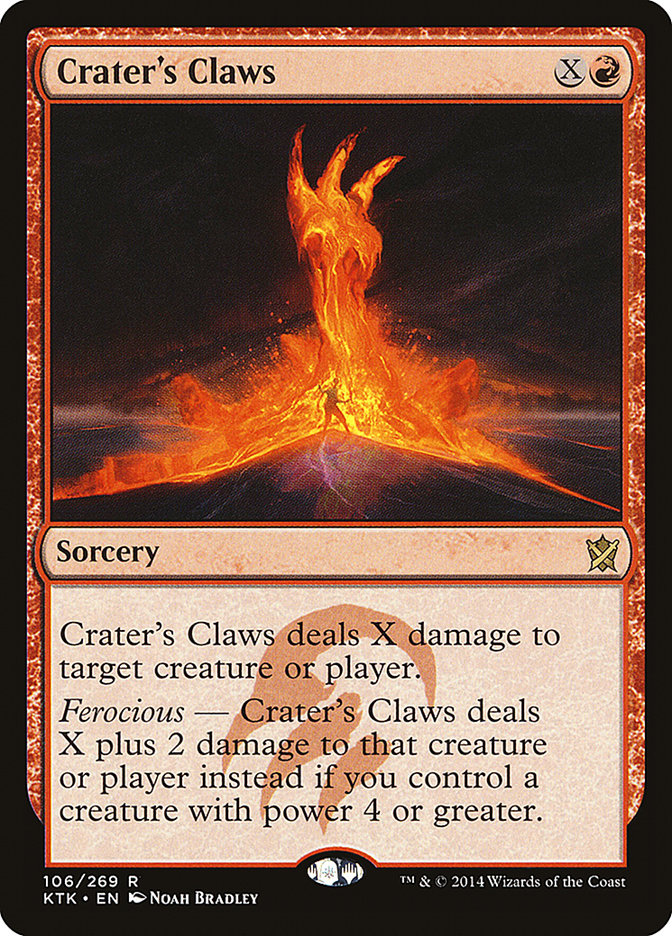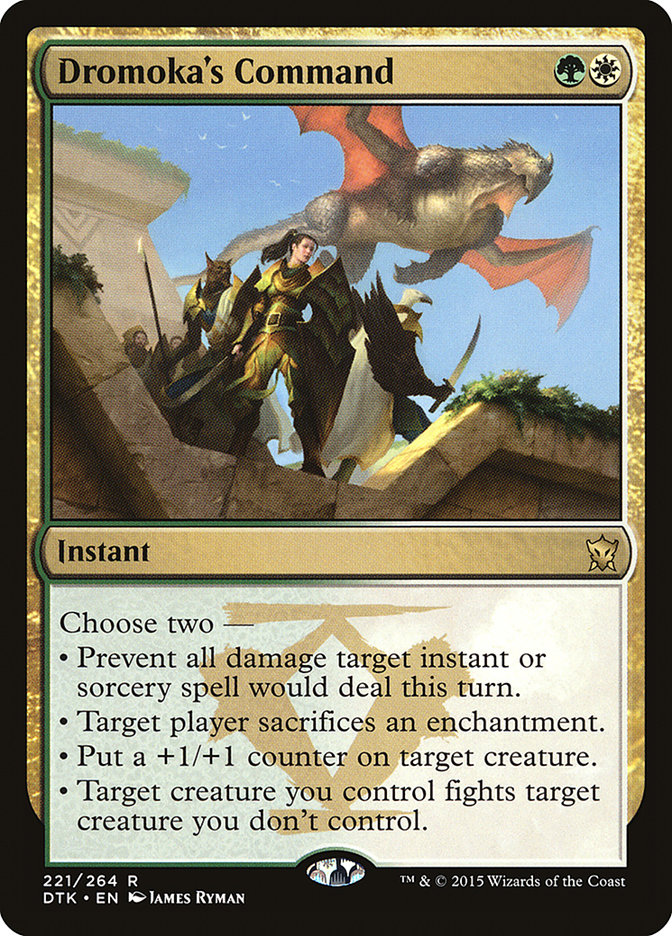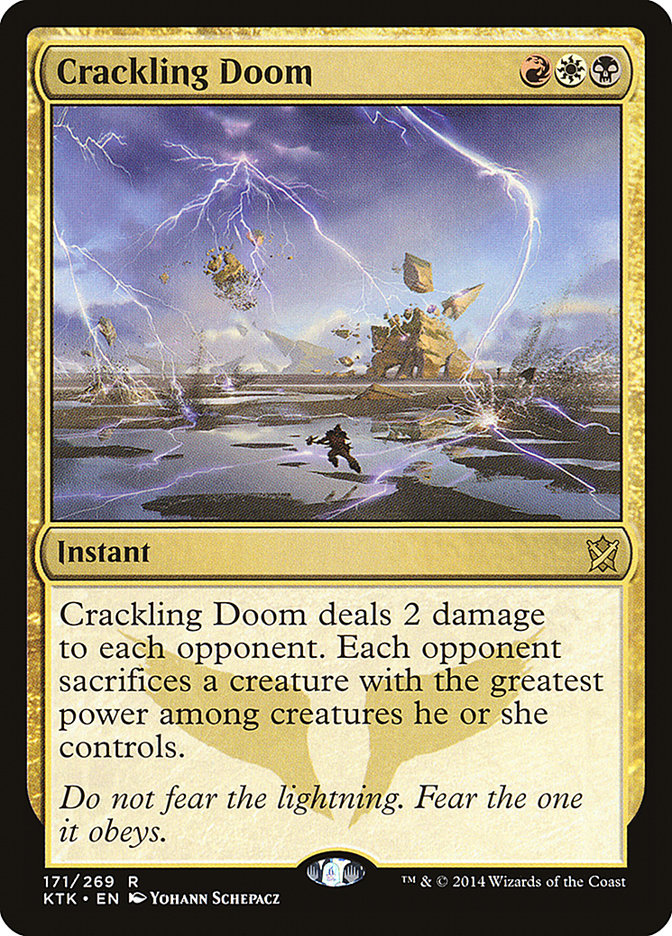This Standard format is really weird. You can do anything you want since the mana is so good, but it seems there’s always a cost, and the tradeoffs are
real. The major cost for everything is time/mana, and that’s particularly pushed here. Each extra color you add to your deck costs you another mana or two
over the course of the game in the form of an extra land entering the battlefield tapped. Additionally, because this Standard format is relatively small,
the options for each effect are relatively limited, which has the interesting effect of meaning that the color pie is particularly constrained–if you want
a certain effect, for example, one mana removal, or 1-2 mana instant speed removal, you’re basically limited to red, though, depending on your needs, you
could argue that white removal spells like Dromoka’s Command, Valorous Stance, and Celestial Flare count, but when you pass on turn 2 and your opponent
casts a Jace, Vryn’s Prodigy, unless you have a creature on the battlefield, none of those let you spend your mana that turn to kill it. Black, I suppose,
has Ultimate Price, which I have some concerns about, but may turn out to be pretty good. If you want to exile a creature, you need to either play white or
pay three+ mana for a narrow removal spell. All these things add up, and when a deck is missing a color, it’s easy to figure out which effects it can’t
have and to try to prey on those.
But understanding the constraints on a format isn’t simply limited to understanding what you can’t do, you also need to figure out what you need to do.
What are the real threats you need to be able to answer? What turn do you need to be able to interact by? How good does your proactive deck need to be to
just not care?
One could argue that Magic has usually been defined by two mana spells. Anything cheaper than that is good, but relatively low impact, and can be answered
by a wide range of one to two mana spells, and anything more expensive than that is slow and expected to be powerful, but a deck can only play so many, and
the opponent has a lot of time to react. A lot of how a format plays is defined by the direction that the two mana spells push a format. When Counterspell
was the best two mana card, Magic had a very different character than when Tarmogoyf was the best two mana card. Bitterblossom was another very different
direction. Sylvan Caryatid, also totally different.
In the same way, I’d argue that Standard today is defined by Hangarback Walker and Jace, Vryn’s Prodigy. You might answer that neither of those are red and
that Atarka Red won the only big Standard tournament so far. First of all, red usually wins the first Standard tournament regardless of how good it is
because it’s easy to build and preys on untuned opponents, so that’s not saying much. Second, Hangarback Walker was still, by my understanding, the most
played card, and third, fine, there’s actually some chance that Temur Battle Rage becomes one of the defining cards of this format, especially because of
how limited we are on instant speed interaction.
You can extrapolate a lot about what Standard should look like compared to old formats by figuring out how these cards are different from two-drops that
defined previous formats. Compared to Sylvan Caryatid, they don’t punish attacking on the ground with small creatures as much, and they don’t reward big
spells. In fact, Hangarback wants you to have more two mana spells in your deck so that you can play another two and activate it on turn 3, and Jace wants
you to have lots of cheap instants and sorceries so that you can fill your graveyard with options. It’s worth noting that, very much unlike Snapcaster
Mage, another defining two-drop, Jace dislikes counterspells, or rather, needs non-counterspells in good numbers to be in the mix. Compared to Tarmogoyf,
or most creatures you can play with two mana, these cards have staying power–they don’t end the game quickly. They build toward strength a few turns down
the line, and they’re still good draws in the lategame. They also build a material advantage over time that matters more than a few life points if they’re
answered late.
Most two-drops can be ignored by decks that are playing bigger things than them in a long game. Something like Fleecemane Lion isn’t a problem if you’re
going to take a hit and play a Polukranos, World Eater or something that will stop it from attacking. Jace isn’t like that; you can’t just leave it on the
battlefield and ignore it in a long game. If you don’t either kill it or your opponent, Jace is going to generate a lot more than two mana worth of value
and make things very difficult for you.
The point is that it’s so essential that your deck has ways to interact with Jace that it might as well be viewed as a deckbuilding constraint. This is why
we see awkward cards like Reave Soul in Gerry Thompson’s Bring to Light deck.
Hangarback Walker is different. You can mostly ignore Hangarback Walker if you have a way to exile it later or if you can sweep away the tokens, and
sometimes you can just go over or around it. It’s strong and flexible, but it’s not the immediate threat that Jace, Vyrn’s Prodigy is, and also, loading
your deck with ways to kill Hangarback Walker on sight isn’t really productive, since unless you’re exiling it for two mana or less, you’re losing value on
the exchange.
Jace obviously isn’t the only reason decks need cheap removal. As always, just stopping one mana creatures from killing you is also a priority, and that’s
even more true when mechanics like landfall and prowess make blocking a below-average prospect, especially if the move to combat tricks to make up for
red’s lack of cheap burn spells, as we saw from Brian DeMars, continues. Chandra, Fire of Kaladesh is an interesting additional consideration that further
demands dedicated removal rather than just trying to block, as it’s capable of a pretty tremendous damage output if left unchecked.
On top of everything else, creature-lands present an interesting pressure on control decks. A 3/3 or 2/3 creature is easy to ignore a lot of the time, but
if you’re a spell-based control deck, they can be hard to interact with, since neither can be hit with sorcery speed removal, and Lumbering Falls has
hexproof when it’s awake. Crackling Doom is the most reliable answer, but it has a very high cost in terms of number of colors that have to be in your
deck.
My view of the format may be less Siege Rhino-focused than one might expect, but Abzan didn’t do well the first week, and when the best deck from the old
format doesn’t do well week one after rotation, I think that’s pretty telling–sure, maybe people just haven’t figured out how to build Abzan yet, but it
seems more likely to me that people would be slower to figure out the more radical departures from the old format. Of course, it’s also entirely possible
that both are true, and that in three weeks, the format will look very different from what we’ve seen so far, but I’m not sure why Siege Rhino would be
expected to become the defining card in that scenario.
Of course, realizing that a deck can’t do a certain kind of thing because it doesn’t have access to certain cards has never been a deal breaker, and it
isn’t one now. What’s interesting to me is that, as we try to figure out how to label these four-color decks, sometimes it really is best to think of them
in terms of what they’re not. Not only is it easiest to parse, “I’m playing four color not-red” rather than listing each of the colors, but it also might
be easiest to think about decks that way. At least toward the beginning of the format, it’s going to be hard to figure out what your opponent is playing
based on their first two turns. Turn 1 Flooded Strand fetching Sunken Hollow is a reasonable first turn play for an Abzan deck with no blue cards depending
on how their mana is built. As the game develops and you try to figure out what your opponent might have, the easiest first step might be to try to figure
out which cards or classes of cards you can rule out based on which colors you think they don’t have access to.
In the past, I’ve preferred keeping my decks to the minimum number of colors, as I think decks always end up with things they can’t do based on card
choices anyway, and when there are plenty of playable cards, I’d prefer not to pay mana in the form of tapped lands when my color(s) already offer
perfectly serviceable options. However, one of my highest priorities is getting as much as I can out of my lands, and creature-lands are a strong push
toward playing multiple colors in this format.
Anyway, while it’s always possible to go over, under, or through almost any problem in Magic rather than actually answering it, it’s valuable to know what
tools exist for dealing with creatures in any given format, so I think it’s worth discussing the options by color:
White
This is an instant that only answers creatures that get into combat, it compares most directly to Swift Reckoning, but it doesn’t require setup to answer a
creature at instant speed, and it can answer Mantis Rider. Unlike Swift Reckoning, it doesn’t play well with Jace, Vryn’s Prodigy, but it does play well
with Soulfire Grand Master. It can also kill a blocking creature, which gives it a lot of extra utility in aggressive decks, but the blocker will still
prevent combat damage.
It’s hard to turn this on very quickly, and until then, you have to take a hit from a creature before you can kill it, which is a pretty big drawback. In
theory, it answers Jace, but it’s hard to turn on in time if your opponent waits until your end step to use Jace. However, people often use Jace on their
turn, so that might not be a dealbreaker.
One of the few spells that deals with Lumbering Falls, but WW is a serious constraint, and it’s very particular about when you can use it and bad against
multiple attackers. This has been great for me as an answer to Stormbreath Dragon, but it is much less necessary now.
This is probably a sideboard card, but it’s obviously great at what it does, and the more aggressive your opponent is, the better it is, as gaining two
life is more likely to be important.
This reliably answers Jace without letting the opponent return it with Ojutai’s Command, and it’s the best answer to Hangarback Walker, but overloading on
this effect can lead to getting very punished by Dromoka’s Command, Tragic Arrogance, or Ugin, the Spirit Dragon.
Exiling any creature at instant speed is outstanding, but WW isn’t trivially easy, and this has the same vulnerabilities as Silkwrap.
Blue
This is an outstanding Limited card that probably isn’t good enough for Constructed, but stranger things have happened, and bounce often exceeds people’s
expectations.
Very similar concept with different advantages and disadvantages.
This has seen fringe maindeck play and some sideboard play, but I’m pretty skeptical of it in general. Blue might have to go here, but I wouldn’t want to.
Black
There are very few options to kill a creature for one mana, and there are also very few removal spells this versatile. Only a very specific kind of deck
can play this, but the fact that you’re pretty happy to play Hangarback Walker anyway and you sometimes want to sacrifice it means that you’re already on
your way.
Cheap removal that kills most cheap threats. You’re not likely to get more than a mana ahead on this, and being a sorcery means it’s a lot worse than what
black expects to have, but it’s a reliable tool for the job.
This is basically the best rate around, by which I mean this is the removal spell that’s best at trading up the most mana, as there are four and five mana
creatures this can kill, and also, just being able to kill a creature on turn 2 at instant speed is great. The problem is that there are a lot of creatures
it doesn’t kill, but as Jace’s market share shoots up, playing a couple of these starts to look a lot safer.
Outside of white, this is the best way to stop a Hangarback Walker from making tokens, which means it’s filling a valuable niche, and this format has a lot
of ways to get things back from the graveyard, so even when you’re not processing, exiling whatever creature you wanted to kill can be pretty valuable. On
the other hand, the rate on this is bad enough that you have to accept that you’re usually going to be trading down on mana, which is a rough thing to
accept.
This looks like it’s built to be the default removal spell, and going long, it offers substantial extra power, but anything that costs two mana of a color
is more of a constraint in this format than it may look like, and it’s a really inefficient way to deal with a one or two mana creature.
This is an excellent planeswalker that can start as a removal spell. It offers a lot more upside than an awakened Ruinous Path at a much lower cost, but
it’s even harder to rely on five mana removal spells.
This is among the best removal spells available, an instant that can hit anything that doesn’t cost too much mana. It’s hard to rely on early and competes
with other delve spells, but the ability and incentive to play extra fetchlands really powers this up.
Red
This is the go-to one mana removal spell in the format, but two isn’t a lot of damage, and its presence will push players to try to choose three toughness
creatures to avoid it where possible.
Most of the time, this is going to do the same thing as Wild Slash. It’s easy to think that this goes in control decks that don’t care much about the
opponent’s life total and Wild Slash goes in aggro decks that do, but the ability to hit planeswalkers is important, so I’d lean toward Wild Slash to start
unless you don’t have other ways to deal with three toughness creatures like Mantis Rider and Drana, Liberator of Malakir.
An unlikely candidate, but in a world where Bone Splinters deserves a mention, this could too. It’s not hard to want more burn than red is obviously
offering, and this is a way to get it in a pinch.
It’ll be interesting to see how much play this gets in decks without Dragons now that Lightning Strike isn’t around. At that point, it’s a bad Fiery
Impulse, but you don’t always have spell mastery, and you still might have to have an answer to those three toughness creatures.
It’s not where you want to start in your aggressive red decks, but Siege Rhino is still in the format, and if you’re leaning on red for removal, this is
still going to be the best way to deal with it.
Plan A for this card is rarely to point it at a creature, but it’s very important that the option exists.
Kind of like the red Ob Nixilis, but better at fighting other planeswalkers.
Similarly aspires to target players, but it can do a pretty good Wild Slash impression in decks that can turn ferocious on reliably.
Green
There are still a lot of Dragons in this format, and they aren’t the only flying creatures. I can’t imagine playing it in a maindeck, but it’s a great
sideboard tool.
Gold
This is among the best cheap removal for small creatures in the format, but without Fleecemane Lion, it’s a lot harder to use. It might find a new friend
in Scythe Leopard.
This card has a long history of excellence, and getting to play extra removal spells in your deck that can be used for other things is really valuable when
you’re trying to overload on answers.
This is basically the best real answer. Answers anything, even hexproof creatures at instant speed, while getting value to make up for the cost, but the
color requirement is prohibitive. Still, this is a top candidate to justify splashing a fourth color in three-color decks that are already any two of
these.
Not something I primarily think of as a removal spell since three mana for two damage isn’t a great rate, but you’ll almost always end up a card in one way
or another
Colorless
I’m not sure how realistic supporting this is, but if it’s 3: Exile target creature, that’s a pretty good spell in this format.
I think that’s most of the best options. What’s striking to me is how red continues to be the color for answering small creatures, and black the color of
answering big creatures, with white doing both but relying on enchantments, which has advantages and disadvantages. At the moment, it notably plays poorly
with delve and Jace, Vryn’s Prodigy.
So where does all of this point? Well, for me, it mostly points toward playing a lot of colors, especially if you want to build a reactive deck. It’s just
so hard to get all the answers you need in one or two colors. Another reasonable takeaway is that it pushes everyone toward building clunky decks, and the
best thing you can do is just build fast proactive decks that punish this awkward removal, and especially the lack of cards like Bile Blight and Drown in
Sorrow, as we’ve seen work for Brian DeMars.



